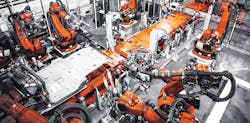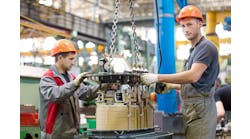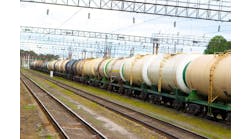Growth has always been the foundation of the U.S. economy. Though sometimes slower than preferred, the GDP still grows every year. Businesses always project growth; staying the same in revenue or profits is not an ideal state. And employment is always expected to grow along with the general economy.
But a study last year found that for the first time since 2007, a labor shortage appears to be slowing job growth. According to a survey by PeopleReady, a staffing firm that specializes in placing manufacturing workers, year-over-year job growth is now at 1.6%, down from 2.3% in February 2015. During that same time, however, job openings remained at close to record levels. The result is that the demand for labor is greater than the supply.
While there are a variety of reasons why this trend will continue—Baby Boomer retirement, wage issues, etc.—the result is the manufacturing industry is projected to fall a startling 2 million workers short of its needs, according to a study by The Manufacturing Institute and consulting firm Deloitte.
While manufacturers take into account a variety of factors on where to locate plants or warehouses—location, infrastructure, business-friendly climate—the available workforce is now front and center.
“The number one concern across every industry is the ability to find qualified labor,” explains Dennis Donovan, principal, WDG Consulting. “The shortage is pervasive and extends to all positions, including engineering, IT, skilled labor (such as welders) and semi-skilled labor (such as CNC operators).”
However, even with a worker shortage, companies tend to locate in areas that are booming due to future opportunities. One city that has seen an explosion of growth over the past few years is Fremont, Calif.
Fremont is the fourth largest city in the Bay Area and home to Tesla, which alone employs 6,000. In fact the city has 26,000 manufacturing jobs, accounting for 25% of the workforce. Large companies such as Boston Scientific, Western Digital, Seagate Technologies and Plexus all have locations there. The city calls itself the capital of advanced manufacturing for Silicon Valley.
It’s this growth pattern that attracted KUKA Robotics Corp. to set up its West Coast facility here. “By far, the main criterion for site selection for us is proximity to our customers,” says Jerry Osborn, U.S. president of KUKA Robotics. In November the company chose Fremont as the site for one of its TechCenters.
Osborn says the diversity of industries—which include automotive, software, electronics and AI—is an advantage to this area. Another major factor is that KUKA is a supplier to Tesla.
“When looking at where automation talent is located, since the automotive industry has been the largest consumer of robots, companies look to the Midwest and the Southeast, but there is also a lot of manufacturing in California,” Osborn points out. “And that’s one of the reasons we chose to locate in Fremont.”
Appealing to Millennials
The diversity of the industries plays into KUKA’s appeal to its workforce. As they supply to all of these industries, they can offer one particular group of workers—Millennials—the challenges they seek when choosing employment.
“One of the ways we are taking into consideration the needs of the Millennial workforce is to offer specific career paths,” explains Osborn. “We also have an advantage of providing automation to a variety of industries and that keeps the work interesting and challenging, both of which appeal to Millennials.”
Attracting Millennials and other workers is getting to be more difficult in an area that offers a large variety of opportunities to workers. It’s also an issue that California, and Silicon Valley in particular, faces the same labor shortage in manufacturing that other states are facing.
RK Logistics, which recently added a 50,000 square foot distribution center in Fremont, is taking a proactive approach to both attract and retain workers. “This area is booming; it’s below full employment and finding workers is difficult,” says Rock Magnan, the company’s president. “Finding warehouse workers when we’re competing with very large players in the area, such as Amazon, is quite a challenge. One thing we have found successful is a three-tiered approach. For our long-time, older employees we offer bonus plans as benefits fit their needs. For the less-tenured workers we offer additional training so they can build a career with us. And for those just entering the workforce and are on the production floor we offer a competitive wage since at this stage monetary concerns are the most important.”
A Shift to Regional Distribution
After talent concerns are addressed there are other factors essential for an ideal location. The days of long-supply chains seem to be declining. “The long global supply chains are costly,” says WDG Consulting’s Donovan. “So we are finding there is more regional manufacturing, operations and distribution, and most of this is due to customer demands. For a Tier 1, 2 or 3 supplier delivery needs to ideally be within four hours. Part of the reason for that is that distribution centers are holding inventory that used to be stocked at the manufacturers’ sites.”
When announcing its expansion RK Logistics pointed out that its new facility was designed to serve the delivery requirement of the Bay Area’s just-in-time manufacturing model.
Other concerns important to RK Logistics include the availability and quality of buildings. Expanding in the area and finding suitable places has been assisted by the business-friendly actions of Fremont, which include expediting the permitting process to get facilities up quickly. The city also has reportedly been a good partner when dealing with hazardous materials and issues surrounding foreign trade zones.
Another essential consideration in making location decisions, according to Donovan, is the availability of technology. “Over the last six to eight years, companies have been investing heavily in new technology in their plants in an effort to increase efficiency and product quality and also to take out labor costs.”
However, the double-edged sword here is that with the new high-tech equipment companies need high skilled workers. And now we are right back where we started with an exacerbated need to find available talent.
Despite the talent shortage, Donovan predicts manufacturing growth across the board. “I have seen expansion in almost all areas of manufacturing, especially aerospace, medical, biologics, food and beverage, plastics and packaging,” he observes.
For its part, KUKA has been partnering with universities, community colleges and technical schools to not only find the right talent but to be part of the process to identify which skills the students need. For example, Osborn is on the advisory board at an engineering school, along with some of his competitors, to help the schools understand what skills the industry is looking for.
“We have been successful in these efforts to match potential employees with the skills our industry needs,” says Osborne.
These methods, it is hoped, will ultimately provide the solution to the skills gap and keep the U.S. on its desired growth trajectory.




